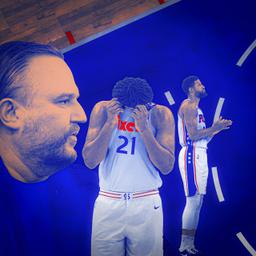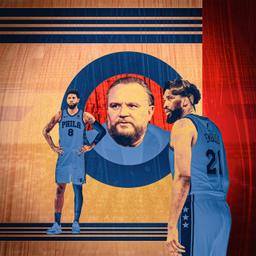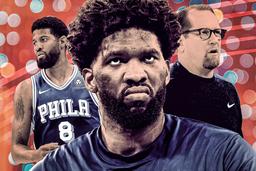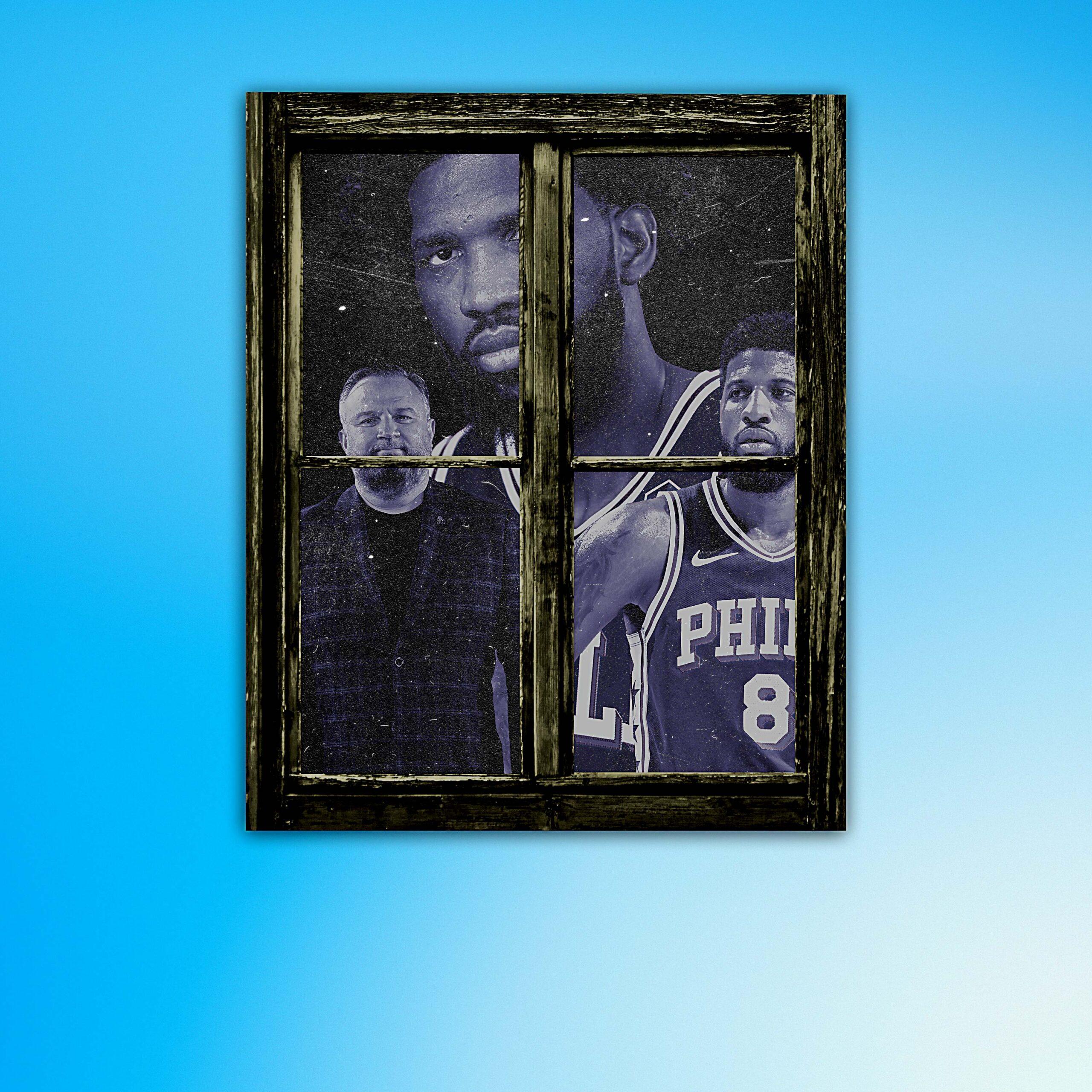
Andre Drummond was stunned the first time he walked into the Philadelphia 76ers’ training facility this summer. The 13-year veteran, back for a second season with the team, had been rehabbing his foot and arrived two days late to camp. He figured he’d ease into things. “I’m [coming in] thinking we’re just going through plays and we’re trying to catch a rhythm,” Drummond said. Then he caught a glimpse of the games. Bodies were colliding. Elbows were flying. Yet not one whistle was blown.
The Sixers, it turned out, had instructed their practice referees to be stingy with calls.
“I’m getting my ass beat out there,” Drummond said. “But to see certain guys on our team play that way, I’m like, ‘Yeah, this is what we needed right here.’”
Same core, new approach. Consider it the motto for this year’s Sixers. Thus far, everyone’s buying in. There’s all sorts of talk about new and improved “standards” and “culture.” President of basketball operations Daryl Morey is touting the roster’s youth and a revamped medical group. Head coach Nick Nurse is raving about the energy he’s seeing in the gym. Players are gushing over the athleticism of V. J. Edgecombe, the no. 3 pick in this year’s draft; the leadership of Tyrese Maxey; and the competitiveness of second-year guard Jared McCain. Best of all, even Joel Embiid is smiling. Physically, he says, he “feels pretty good.” “Mentally,” he adds, he’s feeling “better,” too.
The vibes, dare we say, are pretty good in Philadelphia as training camp gets underway. Then again, we’ve been down this path before. As one person close to the team put it, “All that stuff is great, but can the organization really find any form of success with all the distractions and uncertainty that come with Embiid?” A pessimist might point out that the Sixers star continues to be coy about his health. Will he be ready for opening night? And how many games does he plan on playing after suiting up for just 58 of 164 regular-season games the past two seasons? “I’ll be honest and say that it’s going to be unpredictable at times,” he says.
If that doesn’t give Sixers fans a feeling of Groundhog Day, there’s plenty else to fill that role. In Paul George—who underwent arthroscopic surgery on his left knee in July after suffering an injury during a workout—the Sixers have a second former All-Star on the mend. While his absences haven’t been as mysterious as Embiid’s, they’ve been just as frustrating. At media day, he said he’s still not ready to “start the full ramp-up,” a phrase that must send shivers down the spines of Sixers fans. “All I can do is just focus on doing that day after day, taking it one day at a time,” he says. Neither he nor Morey has yet to offer a timetable for his return.
On top of all that, McCain is now out four to six weeks after tearing a ligament in his right thumb during a recent practice—perhaps a casualty of the increased physicality?—meaning that once again the Sixers will enter training camp with one of their young pillars on the mend. Meanwhile, Quentin Grimes, whose late breakout was one of Philadelphia’s lone bright spots last season, is engaged in a contract dispute with the Sixers that’s keeping him away from the team, fulfilling yet another ignominious preseason tradition. None of which seems like the ideal way for the team to bounce back from an embarrassing 24-58 campaign.
Yet, despite all of that, there’s a clear sense of optimism running through the organization. Not a swagger, like last year. More like the quiet pride that comes from feeling as if you’ve properly diagnosed a problem.
“We realize we’re in the ‘prove-it’ phase,” Morey said at media day. “I don't think it really matters what we’re saying up here on our expectations at this point.”
The real question now is whether the Sixers truly have a chance in the depleted Eastern Conference. Or, put another way: Is a team built around Embiid and George still worth taking seriously—or has its window already closed?
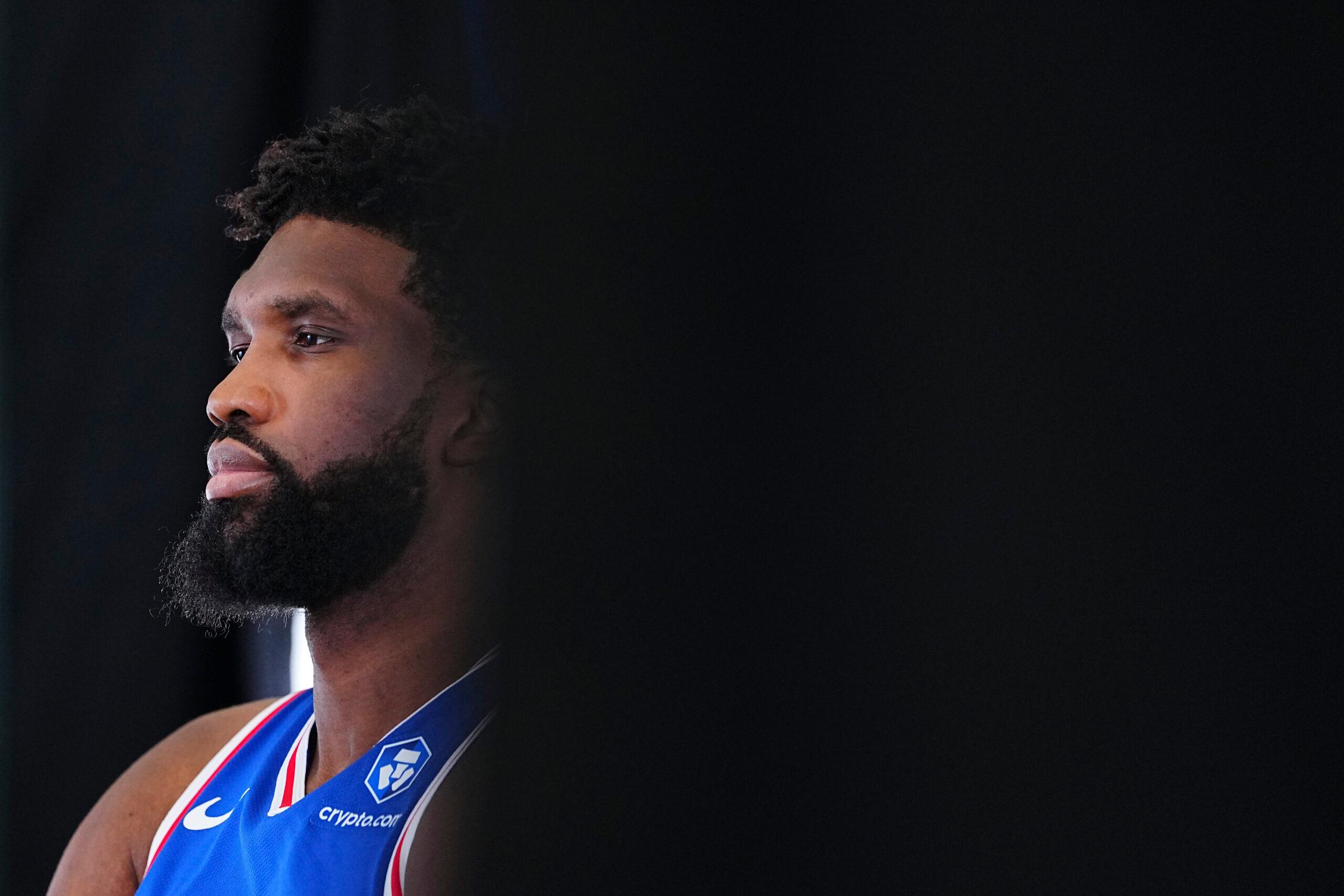
Here’s a quick refresher on how we got here …
Coming off a first-round playoff exit in 2024, the Sixers—thanks to Maxey agreeing to delay his extension—were able to take advantage of some use-it-or-lose-it cap space and lure George away from the Los Angeles Clippers. It took a commitment of four years and $212 million—a massive financial risk to take on a 34-year-old—but the move was widely praised. George, an elite, do-it-all wing, was the consensus top free agent on the market. He appeared to be the perfect player to slot in alongside Maxey and Embiid, both of whom were also locked up on long-term deals before the season.
The championship core that Morey and his predecessors had long chased was seemingly in place. The Sixers spent the preseason talking about their plan to coast through the regular season, as if a playoff run were a given. They entered the 2024-25 regular season with the league’s third-best title odds.
And then? “A rock-bottom type of season” is how George describes it now. The problems were vast and wide-ranging. The supporting cast (Reggie Jackson? Caleb Martin?) assembled by Morey was old and slow. Nurse’s schemes, particularly his pressure-predicated defense, didn’t take. George missed half the season due to various injuries; when he did play, he looked more like a spectator than a star. The 16.2 points he averaged per game was his lowest mark since his sophomore campaign in Indiana.
Still, the Sixers might have survived it all—or at least avoided becoming a punchline—if not for Embiid’s unsteady health and flawed approach.
“The organization was built around one guy who doesn’t trust anyone and mostly keeps to himself,” one former Sixers staffer said. When that one guy is putting up Wilt-like numbers, it can work. Not so much when he’s playing in just 19 games—a career low—and, in those rare moments when he does suit up, shooting a career-worst 44.4 percent from the field while looking timid, heavy, and slow.
Making matters worse was Embiid’s refusal to be transparent about his injury. Not just with the public. He walled himself off from the majority of people within the organization, too. Players often showed up to work not knowing whether the team’s star would be suiting up. Coaches often didn’t know Embiid’s status until he finished pregame warm-ups, sometimes less than an hour before tip-off. Nurse, who was forced to absorb the daily barrage of health questions, grew visibly frustrated. Knowing that even the slightest disclosure might be perceived by Embiid as betrayal no doubt added to the stress. “With Joel, even if there is a plan in place, you can’t say anything about it,” said a second former team staffer.
“It all created an environment of dysfunction,” said an associate of a Sixers player.
That tension boiled over in November, when ESPN’s Shams Charania reported details of what was supposed to be a closed-door, players-only meeting, with most of the grievances aired being directed at Embiid. “There was definitely a vibe shift among the players after that story broke,” one person close to members of the team said. “It really affected the whole locker room,” said a second person close to another player. “People left that night feeling like they had turned a corner. Everyone promised to keep the details in-house. And then they wake up and all the details are out.” The leak seemed to sting Embiid most. “Once you cross that—you can’t expect me to be part of a team meeting again. That’s just not going to happen,” Embiid told an ESPN reporter over the summer.
The losing—and everything both causing it and surrounding it—wore on everyone. Even Maxey, famous for his smile as much as for his speed, occasionally sulked. “I’ve never lost in my career,” he said recently. He was so broken, he now says, that he spent part of his summer focusing on his mental health.
Going from a championship contender to a lottery-bound punchline took its toll on Morey, too. He’d never endured a losing season in his 18 years as an NBA general manager. The turnaround he kept expecting never came. Colleagues noticed that he’d often arrive in the office looking like he hadn’t slept. Friends shared stories of having to “talk him off the ledge” during phone calls. In an end-of-year press conference, Morey told reporters that he planned to “assess everything.” Yet, he made clear, he wasn’t ready to punt on his core.
“In my opinion, when you have an MVP-level talent, you need to make aggressive moves to upgrade around that talent in that window,” he said. “That's what we did last offseason, and we feel good about it going forward. I think it's such a unique thing to have a player of that caliber.”
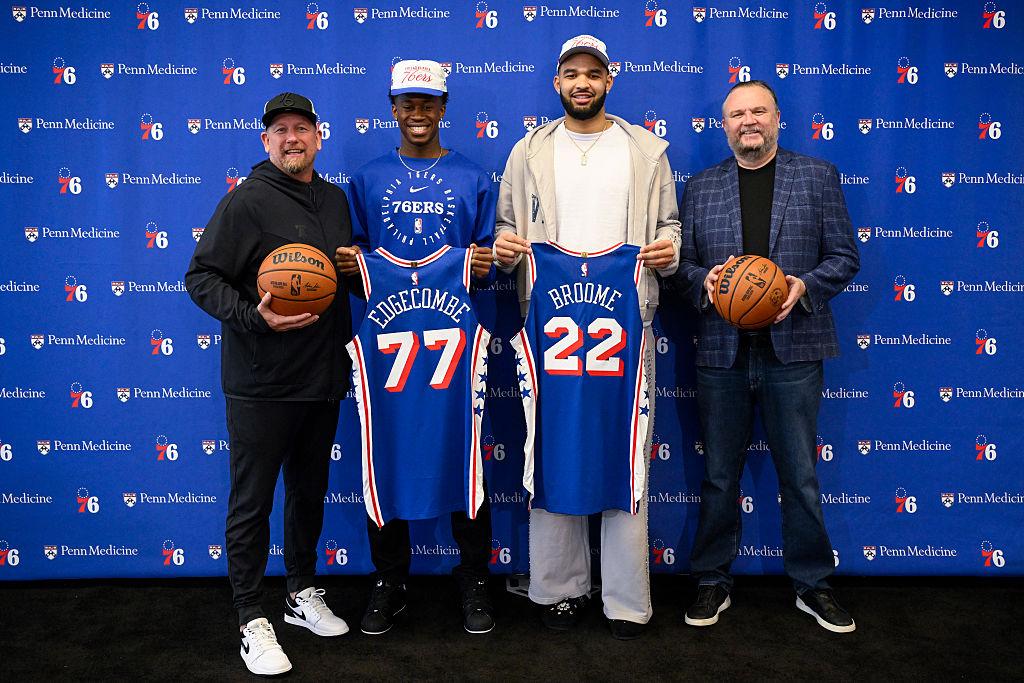
Nick Nurse, V.J. Edgecombe, Johni Broome, and Daryl Morey during a press conference introducing the players
Morey spent the offseason evaluating every department of the organization. Nurse did his own assessments, too. “To be honest, there was a lot of pissed-off-edness,” he said recently. Numerous employees were soon let go or replaced. Coaches. Physical therapists. Medical staff. (Morey seems particularly excited about working with a New York–based orthopedic surgeon named Dr. Jonathan Glashow, whom he name-checked multiple times on media day.) Even a security guard close with Embiid.
“How do we turn the page and make sure we have a championship approach in everything we’re doing?” Morey said when describing his approach. “That did result in a lot of changes.”
From a roster standpoint, however, Morey had few options. Embiid and George are locked in to hefty long-term deals. No one was going to take them without forcing the Sixers to fork over additional assets, meaning that there was no reset trade to be made. On the other side of the spectrum, Morey could have flipped the no. 3 pick for a win-now veteran, but doing so would be betting even more on the health of George and Embiid, a wager no sane GM would make at this point.
Instead, Morey looked at the things he could control. He realized he had erred in building the supporting cast—or, as he might say, “over-indexing”—with veterans and taking the regular season for granted. “We did want to inject a lot of youth into this roster so we can manage through injuries better as well,” Morey said. He and Nurse also recognized that today’s NBA is just different. The game is faster and more physical. Younger teams—look at the reigning champs—are succeeding more than ever. To compete, both Morey and Nurse had to adjust.
“We talked about being a little more athletic, a little faster, a little younger, a little quicker,” Nurse said. The Sixers wouldn’t just carve out roles for Edgecombe and McCain; they’d also fill out the rotation with sophomores like Justin Edwards and Adem Bona, both of whom impressed team higher-ups and the coaching staff last season. “I think we’re tied for the number of players under 25 in the league,” said Morey, who’s spent most of his career reserving bench spots for proven veterans like P.J. Tucker and Trevor Ariza. He added, “We feel like we’ve buffered things better with youth,” most of whom, the team’s veterans say, are cut from the same cloth as they are.
“We have really good young guys, and they have this open happiness and this spirit that’s just a pureness,” said veteran guard Kyle Lowry, back for a third season with the team. “They love basketball, they want to work, they get into the gym early, they listen to the coaches.”
In other words: The Sixers didn’t get younger because they’re waving the white flag. They’re doing so because they believe it gives them a better chance to win games, in the future, sure, but also now.
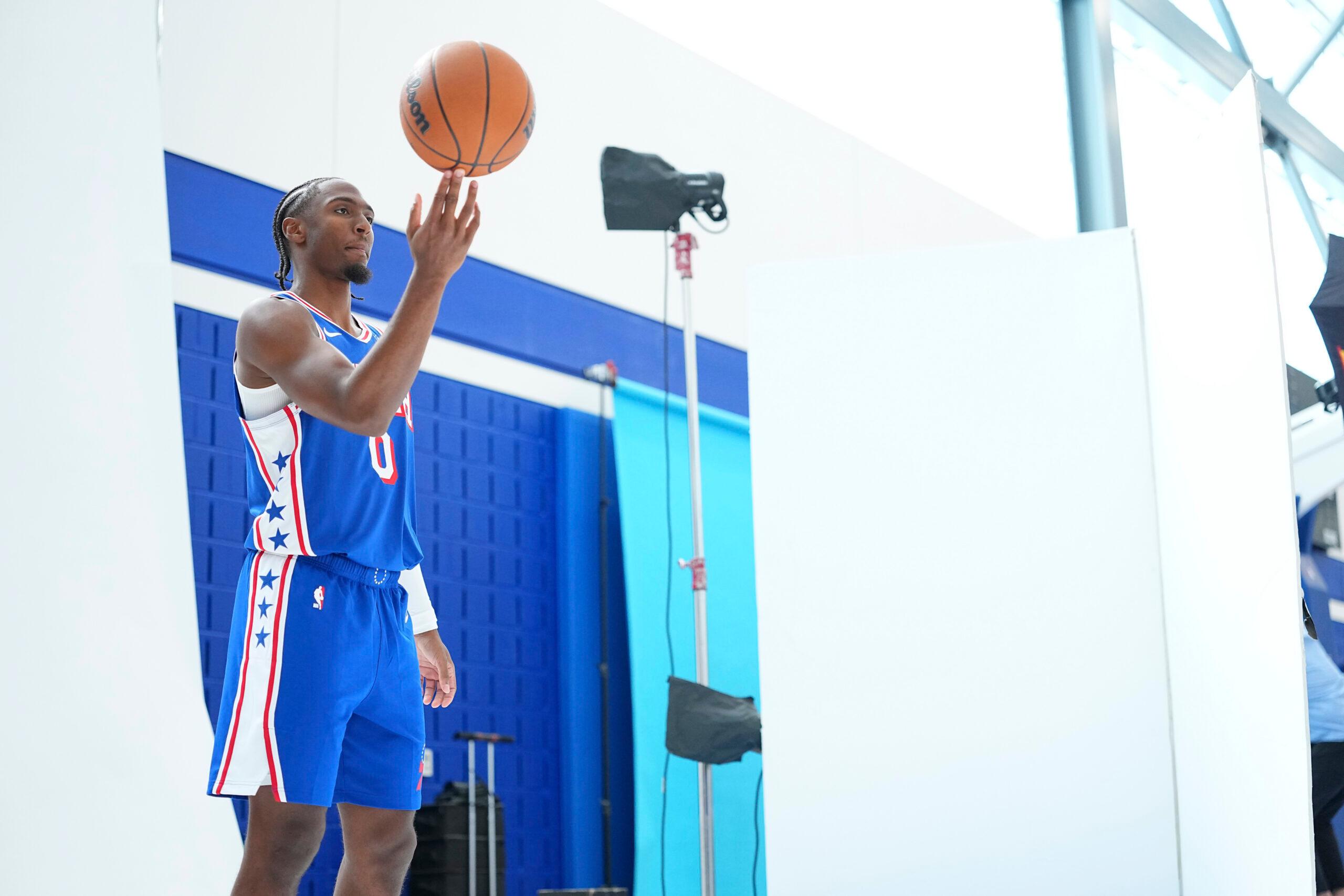
But can this work? Can the Sixers really bounce back from everything they’ve endured? Can a team with 69 percent of its salary cap tied up in George and Embiid, two players who might spend the majority of the season watching from the sideline, really succeed?
This is where Maxey, entering his sixth NBA season, appears to finally be comfortable sliding into a leadership role. “We’re trying to create an identity where, no matter who plays … it doesn’t matter,” he declared on media day, sounding like no Sixers player in the Process era ever has. “The 76ers are going to play this way every single night, no matter who’s out there. We’re going to compete, we're going to play hard, and that's what it has to come down to.”
During the offseason, he took it upon himself to start acting like the team’s leader, too. He organized players-only runs and brought Edgecombe to Disneyland. He started playing video games so that he could spend more time with younger teammates, a bunch of whom he invited over to his family’s home in Dallas.
“Just building that camaraderie and a brotherhood off the court, I think that's one of the biggest things that I tried to do this summer,” he said.
The bull case for the Sixers this season is straightforward. It starts with the team’s injury luck improving. Or, as Morey would likely put it, regressing to the mean. “Last year was a little unique,” Morey said. “I think at times last year, we were without five to seven of our players.”
It helps that the East is in shambles, too. The Cleveland Cavaliers, New York Knicks, and Orlando Magic appear to be sure things. Beyond that, who knows? The Boston Celtics and Indiana Pacers might be facing gap years without their stars. The Milwaukee Bucks are relying on Kyle Kuzma and Kevin Porter Jr., and Giannis Antetokounmpo is continuing to hint that he might want a new home. The Miami Heat will be without Tyler Herro for a couple of months. Maybe a void will open at the top of the East that the Sixers can fill?
And maybe Embiid—who was basically a full participant in the Sixers’ first practice of training camp—will regain some of the pop from his 2023 MVP season. Maybe he’ll play 45 or so games. Maybe George, feeling more settled with one year in Philly under his belt, will grow more comfortable with his teammates and his role in Nurse’s system. Maybe McCain will return from his thumb injury and pick up where he left off last season. Maybe Edgecombe will live up to expectations. Maybe Bona and Edwards will continue to grow. Maybe Grimes will eventually give them a boost. Maybe Nurse, leaning on his experience coaching Kawhi Leonard during the Toronto Raptors’ 2019 title run, will learn how to better manage the uncertainty surrounding his veteran stars. Maybe Maxey’s message will take hold.
Maybe it will all work, and next month, Stephen A. and Kendrick Perkins will be debating whether or not the Sixers are for real. Maybe none of this will happen and, come January, Morey will indeed decide to pivot. Maybe the Sixers will land somewhere in between. There’s no predicting the future. The best a team can do is learn from its past. The Sixers say they’ve done so. The question isn’t whether or not they have. It’s whether or not it’s too late.
